Excursion to Matuail Landfill in Dhaka
What does a sanitary landfill look like? Matuail Landfill in Dhaka, operated by the Dhaka South City Corporation (DSCC), is the closest a landfill in Bangladesh comes to achieving the status of “sanitary”. Members of the SCIP project’s Working Group III and the AWC organized an excursion to the capital of Bangladesh to see and experience first-hand the operation and structure of this site.
Over the last years, the SCIP Plastics Working Group III has been developing improvements for the Rajbandh Landfill in Khulna City. However, without practical experience, it isn’t easy to formulate a sharp and clear vision. Thus, our group arrived at Matuail with a bag full of questions: What does the operation of a permanent weighing station entail? What does an engineered 1:3 slope with a top cover look like? Do the stormwater drains and leachate drains keep those two liquids separate? How does Matuail deal with informal waste workers? Thanks to the assistance of local site engineers and technical managers, we were able to explore different areas of the site, from the active working zone, to leachate treatment.
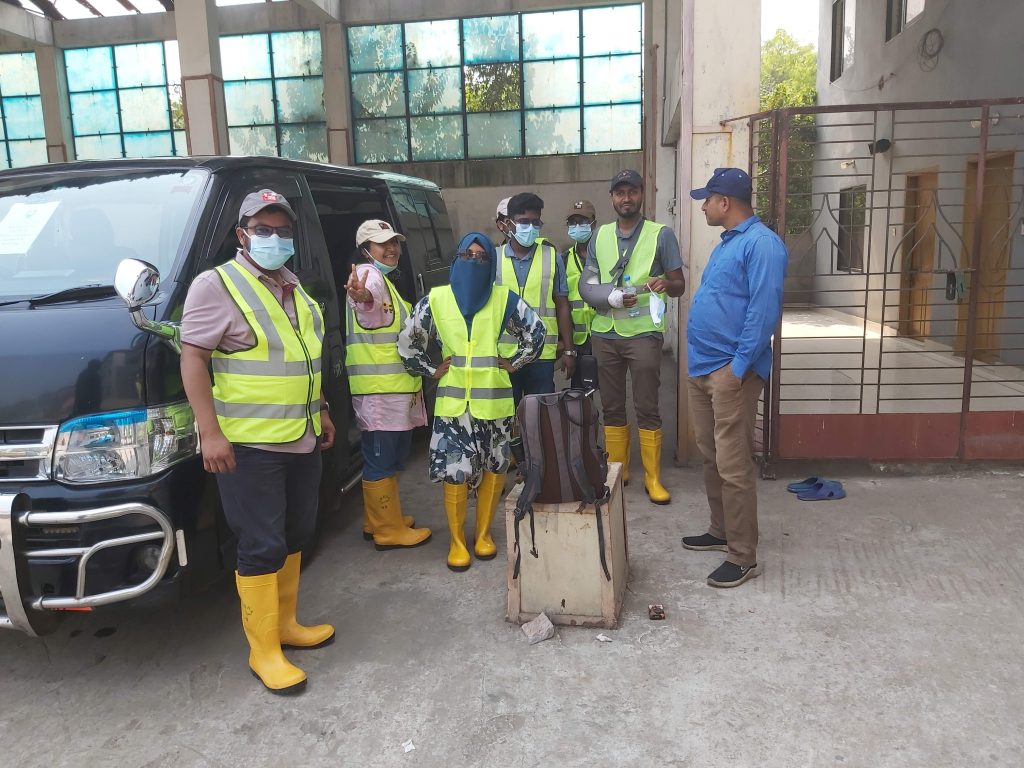
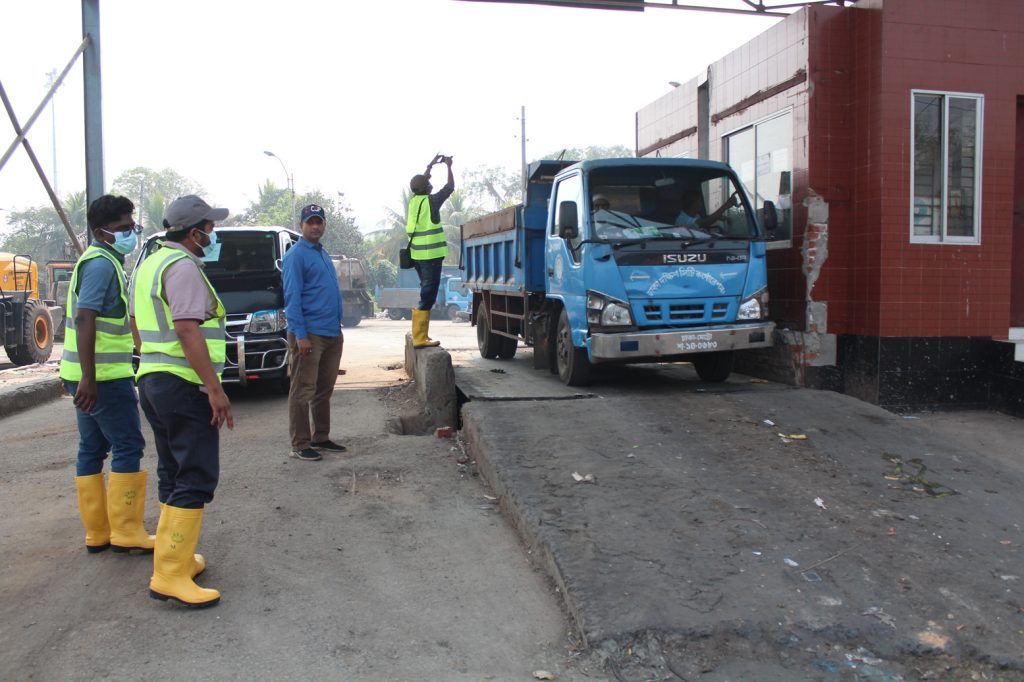
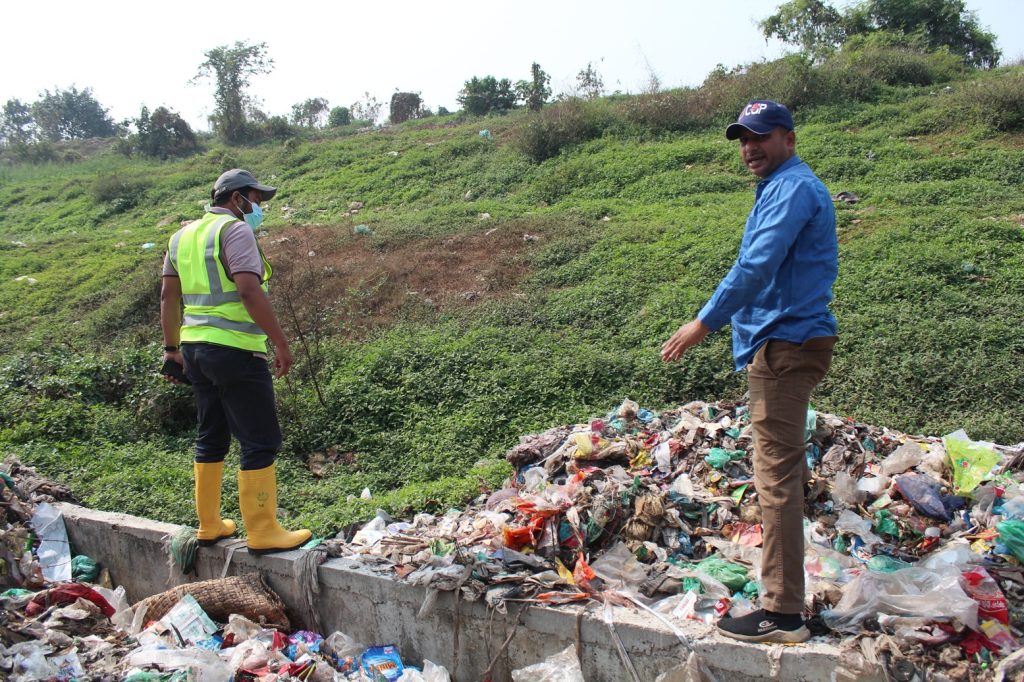
Arriving at the site, we are checked in at a gate, and the scale of the operation becomes immediately apparent. A dedicated building for site engineers and technical staff, a large workshop and garage for the different vehicles greet us, and beyond that, mountains of Dhaka’s waste surround us. Waste collection trucks arrive by the minute, and their weight is registered at the truck scale. The site receives around 3000 tons daily and operates 24/7. Due to the congested traffic in Dhaka, waste collection is often shifted into the night to avoid compounding traffic jams. The JICA investments in the site’s design and operation are obvious: gas wells, leachate drainage, a stormwater drain, and a full-scale leachate treatment are in place. The access road and interior roads are reinforced, making waste deliveries possible, even when it rains.
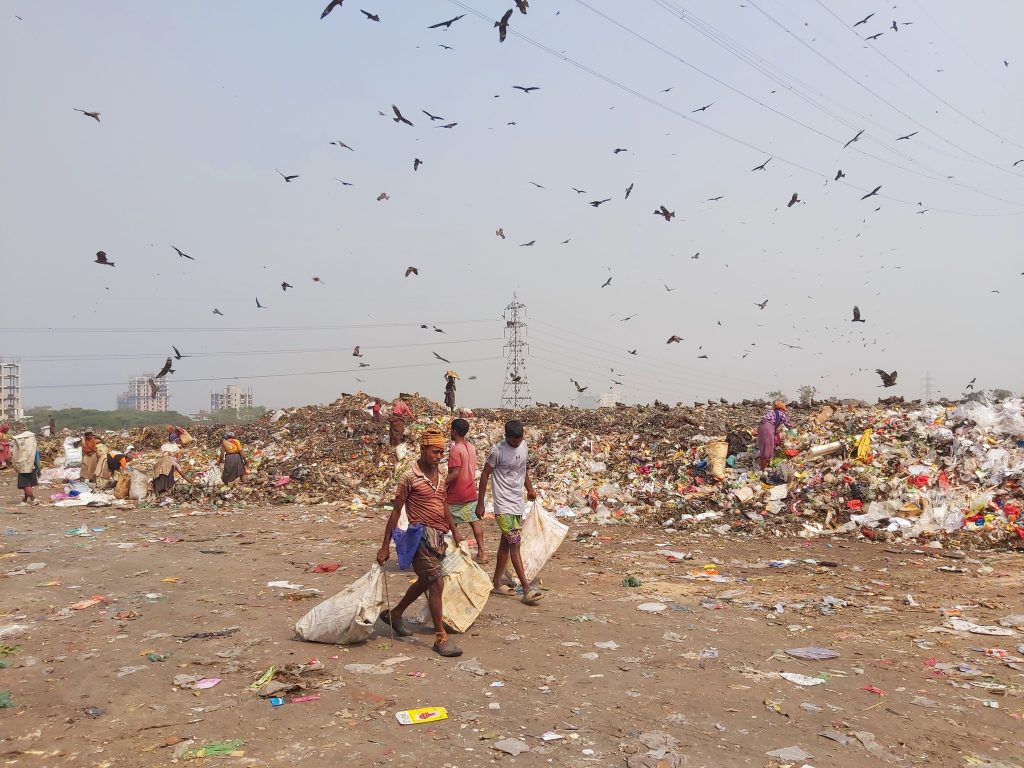
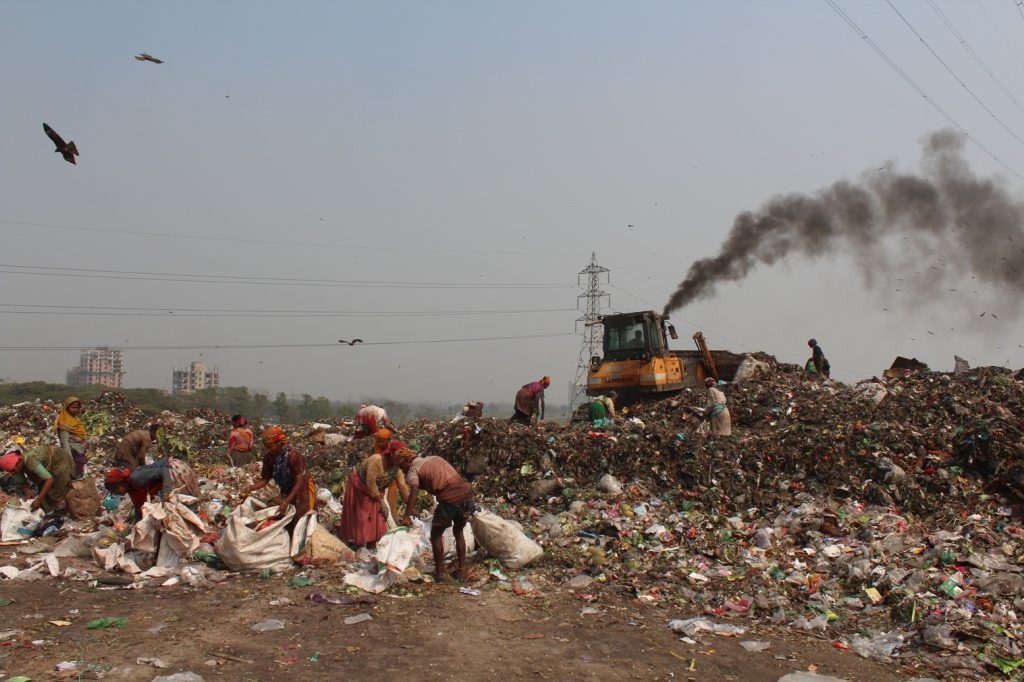
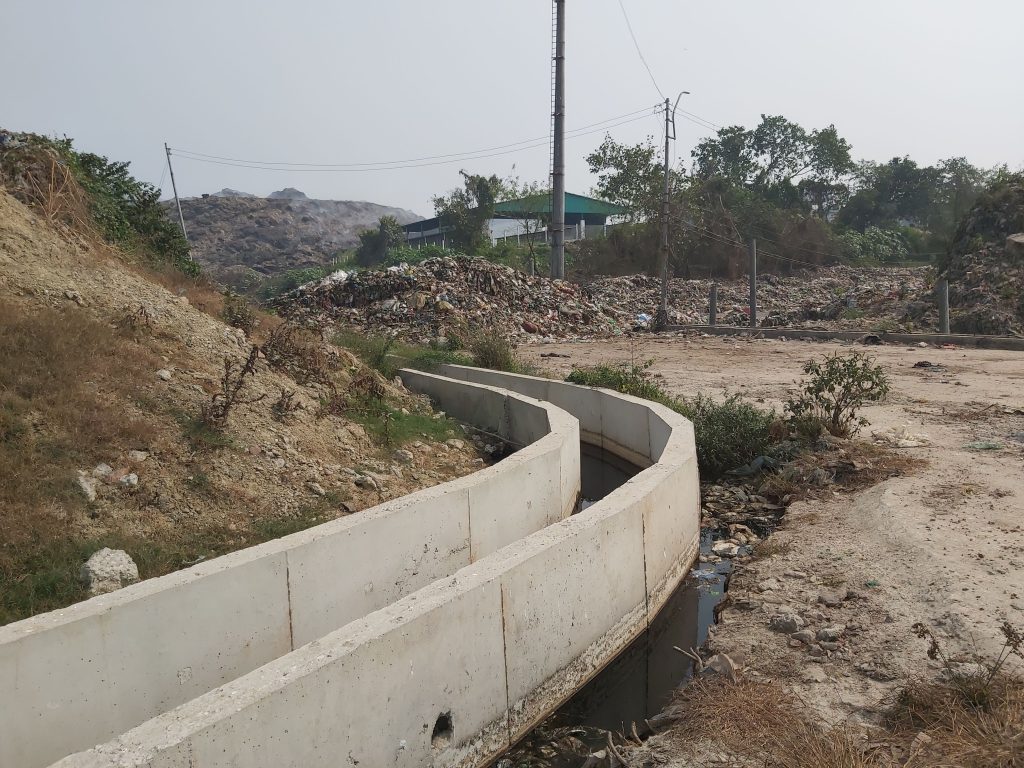
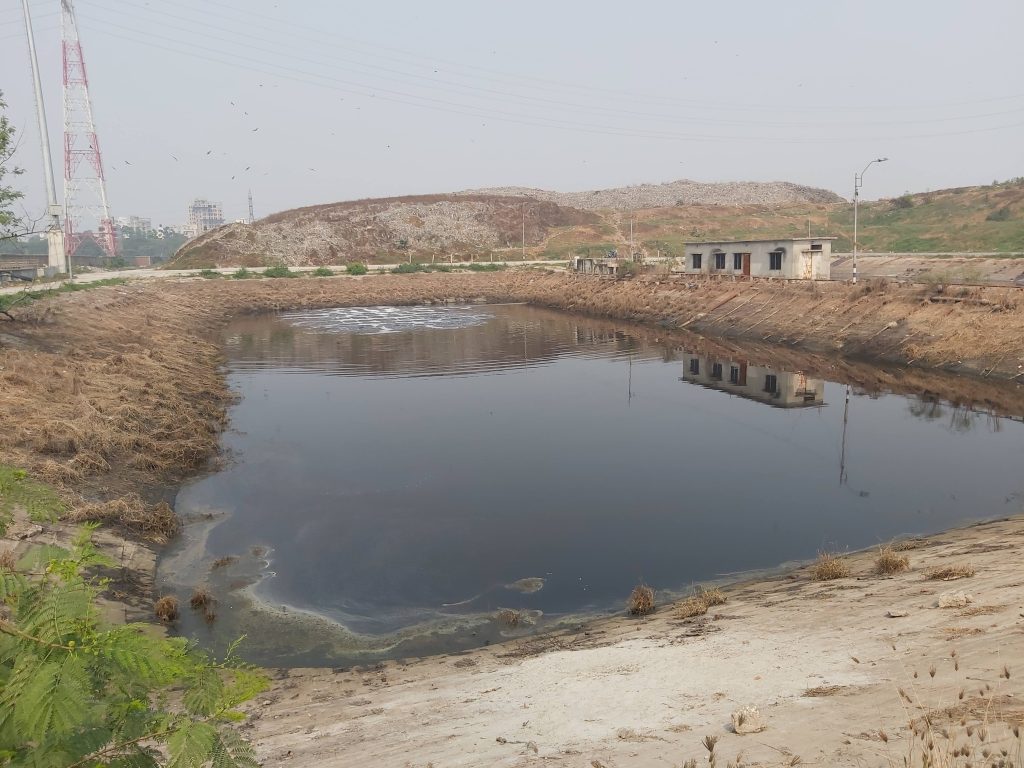
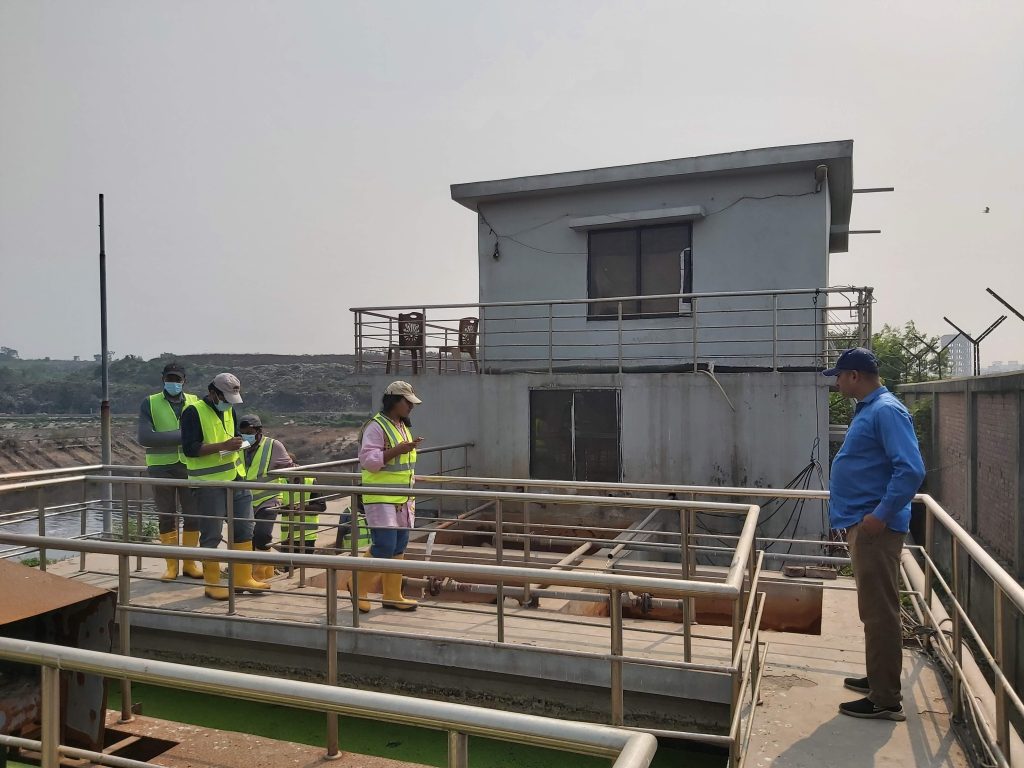
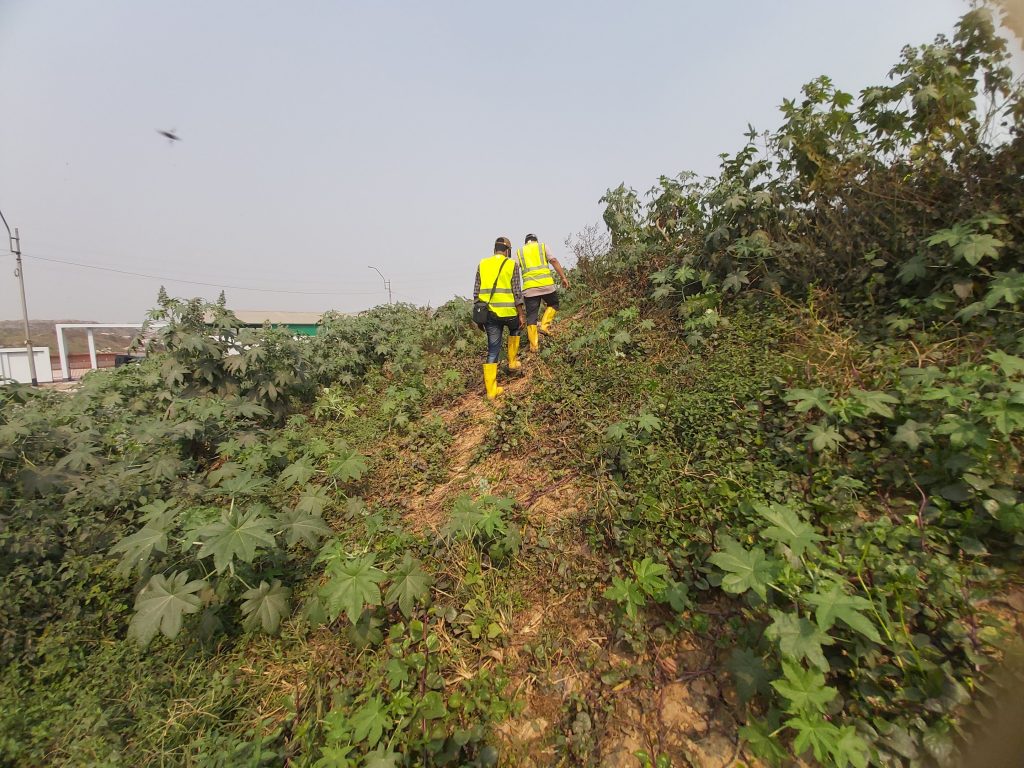
At the end of our visit, our idea of what is possible at Rajbandh is clearer. At Matuail or Rajbandh, accurately weighing waste deliveries is a crucial operation for effectively managing and planning a landfill site. We have seen how RCC-roads significantly improve navigation on the site. Leachate and stormwater separation appears to be a challenging task that can fail quickly without consistent vigilance and control. Equally challenging seems the management of informal waste workers onsite. Working conditions are hazardous, and it would be worthwhile to delve more deeply into the local organization.
Our main takeaway: Rajbandh is a comparatively small operation, and it should be possible to transform the site’s operation towards that of a sanitary landfill.